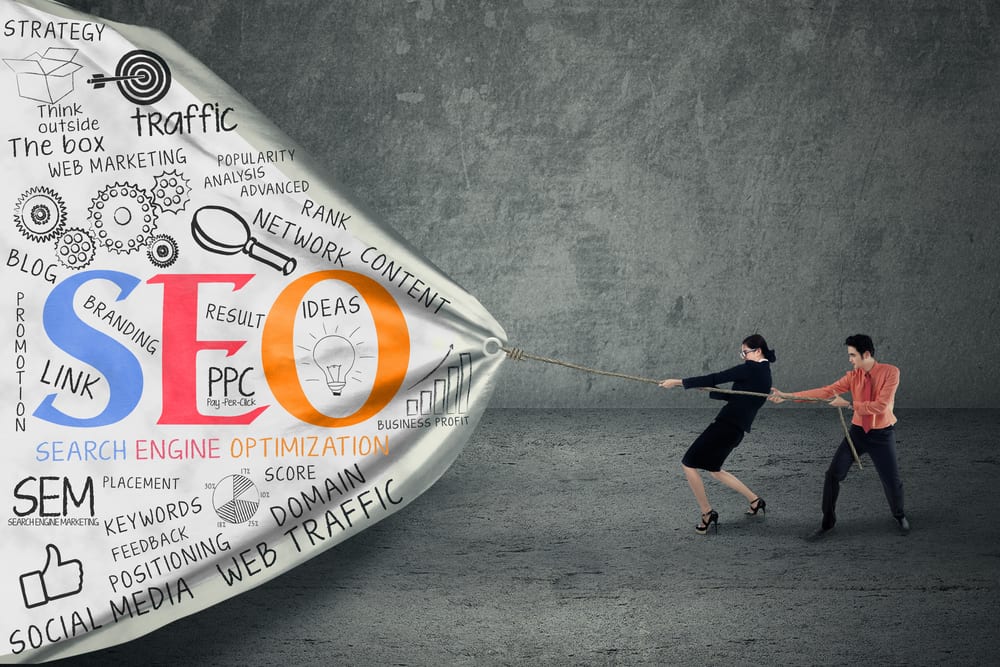One of the best ways for a new business to gain visibility online is through SEO. If you’re managing your own page, know that SEO can require a mix of strategy and timing as well as writing content to encourage readership.
SEO is a field of continual evolution. If you want your site to perform well in search engines and attract more organic traffic, it’s crucial to stay on top of every new trick and trend that comes along.
It can seem intimidating, but creating an SEO-friendly site doesn’t have to be frightening. The key is being aware, and working strategically with the knowledge you have. Adding a few little tweaks here and there will make a big difference over time — if you start now and are consistent.
Here are 10 useful tips to start with:
Create website content to target valuable keywords
If the site’s content isn’t optimised to meet the needs of search engines, then no matter how “SEO-friendly” your website is, it won’t be very effective. Content should be written with an SEO focus. That means also considering it from a user’s perspective.
Creating good website content is part art and part science. While it’s true that web writers aren’t typically trained in the sciences, good SEO content has certain structures that can make your website more visible to search engines.
Use responsive design to connect with mobile users
To be a success in the search results and turn website traffic into paying customers, your site needs to provide an experience that fits the way mobile users browse. That’s why responsive design is fast becoming a standard for keeping up with search habits – and getting higher rankings.
Responsive design makes your website look great across devices, and is a must if you want to rank well in search engines.
Mobile friendliness is a critical aspect of responsive web design that significantly influences search engine optimization (SEO). This means a great web design for SEO can adapt and display content effectively across various screen sizes and devices. When users find it easy to access and share your content on their mobile devices, it can increase organic traffic and improve SEO performance.
Optimise header tags to help search engines better understand your pages
Search engine spiders work by reading the content on your website. This means that it’s important to use tags that allow the search spiders to index and understand your site easily.
H1 and H2 tags are very important tags because they tell the search engines what the main topics and subheadings of that page are. It is therefore important to optimise these header tags in order to help make your website more search engine friendly.
Header tags and snippets play interconnected roles in on-page SEO. Snippets are concise page descriptions visible in search engine results beneath the title and URL. They summarize a page’s content and serve as a preview for users.
When header tags contain keywords or phrases related to a user’s search query, search engines are more likely to incorporate these keywords into the generated snippet. Typically, the H1 tag’s content, being the primary heading, plays a significant role in shaping the snippet’s main text, while subsequent header tags like H2 or H3 can also influence the snippet’s content.
Ensure pages have a meaningful structure
The first part of optimising a site for Google’s crawlers is to ensure that pages have a meaningful structure.
Put simply, this means that you need to ensure that all pages on your site are easy to identify from the spiders’ point of view and can easily be crawled and indexed with the minimum number of requests.
Avoid keyword stuffing
Some people try to attract search engine traffic using keyword stuffing (black hat SEO). That is, get in as many keywords as possible on a page so the page can rank well for that keyword.
The keyword-stuffing technique – although once an accepted practice – is considered spammy, and Google is actively looking to penalise sites that use it.
The most effective alternative to keyword stuffing is to prioritize high-quality, natural content while still optimizing for relevant keywords. This approach begins with thorough keyword research, including long-tail and related terms.
Create engaging, informative content that addresses your audience’s needs without forced keyword insertion. Regularly updating your content and monitoring analytics for data-driven decisions further contributes to sustainable SEO success.
Check for orphan pages
Orphan pages are pages on your site that are not directly linked to any other page from your site. In SEO, orphan pages are something to be avoided.
On-site, the reason is obvious; they have no value and users won’t find them. Off-site, orphans aren’t penalized by Google but can deprive you of links to quality content on your site.
Link internally within your website to help search engines crawl and index your site

An SEO-friendly site is often considered one that has good internal linking. To help search engines crawl and index your pages, you want to include these links throughout your website.
Optimise meta descriptions to boost site clicks in search results
Meta descriptions help people know what your page is about. They appear below your site’s title on the search engine results page (SERP). It’s important to optimise them to attract potential users to click on your listing.
Meta descriptions are a valuable tool for helping to boost your site click-through rates (CTR) within search engine result pages (SERPs).
You can maximise search engine exposure, improve the quality of your organic traffic and take advantage of new opportunities for search marketing – particularly with Google’s introduction of ‘Snack Pack’ SERPs – by ensuring meta descriptions across your website are well optimised.
Keep visitors on your site longer by enhancing readability
Effective SEO means building websites with Google in mind, and one of the best ways to do this right from the start is by focusing on readability. Today’s consumers want easy-to-follow information, how-to guides, and plenty of white space.
If you create a site with plenty of white space, informational content, and short paragraph lengths, you’re likely to keep your visitors there longer. That keeps the website owner in control of their own traffic!
Increase your website’s performance by optimizing images
Up to 50% of all website page load time are consumed by images. This is because images can be larger than the text of a web page. By simply optimising your site’s images, you can improve your site’s load time and keep users on your pages longer.
Besides, page load time or page speed can have a huge impact on your website’s search engine ranking. In fact, Google is regularly updating its search engine algorithms to include factors such as page speed when it calculates the rankings and search results for relevant keyword searches.
Final Word
Developing an SEO-friendly website is a difficult task. It takes time, money, strategy, and patience. With this guideline, you should have enough insight to begin search engine optimisation efforts for your website.
Whether you’re an individual looking to establish a presence online or a small business owner who needs more traffic to your sales page, having a well-optimised site will lead to greater success.


